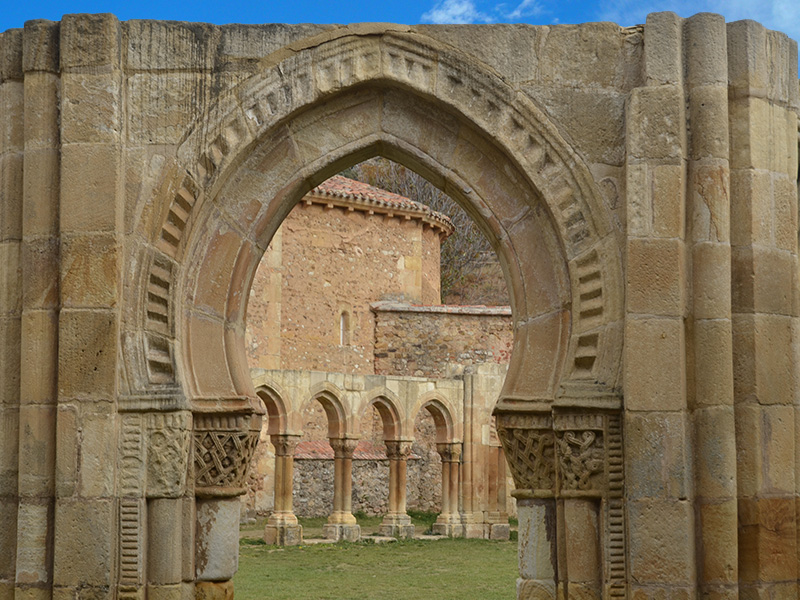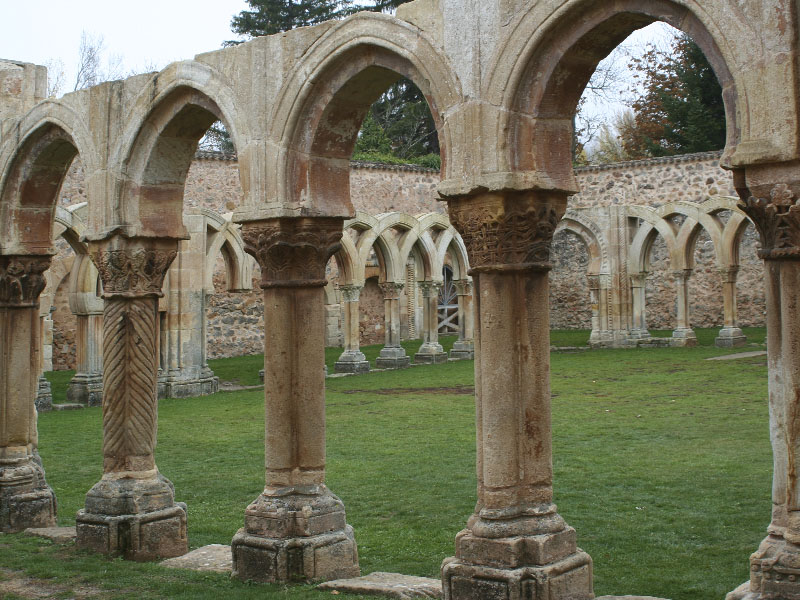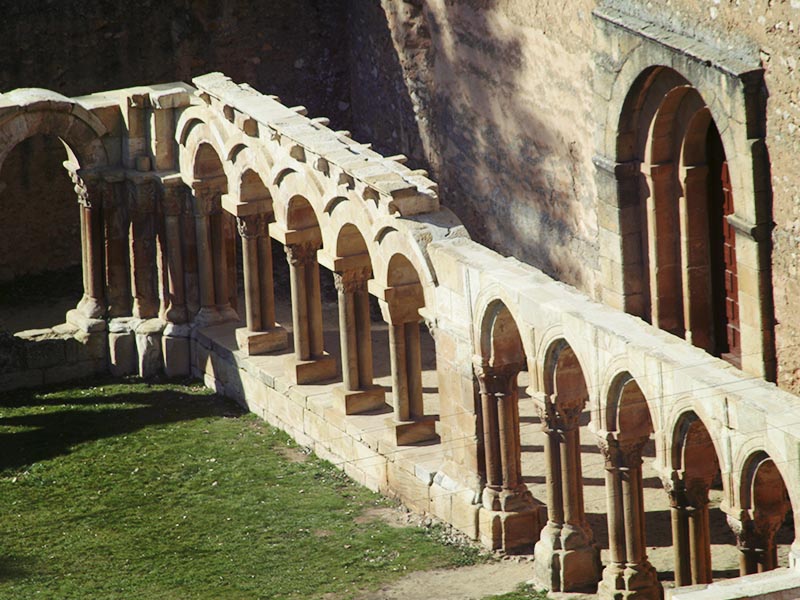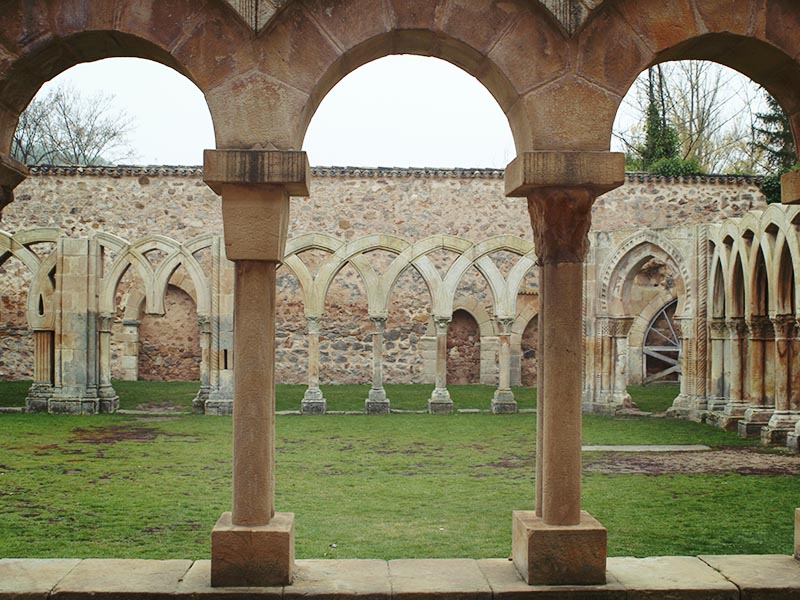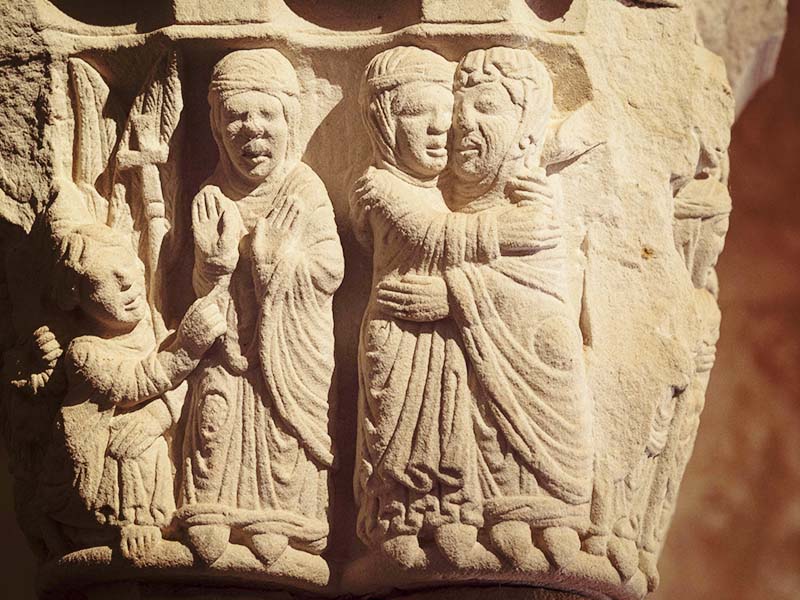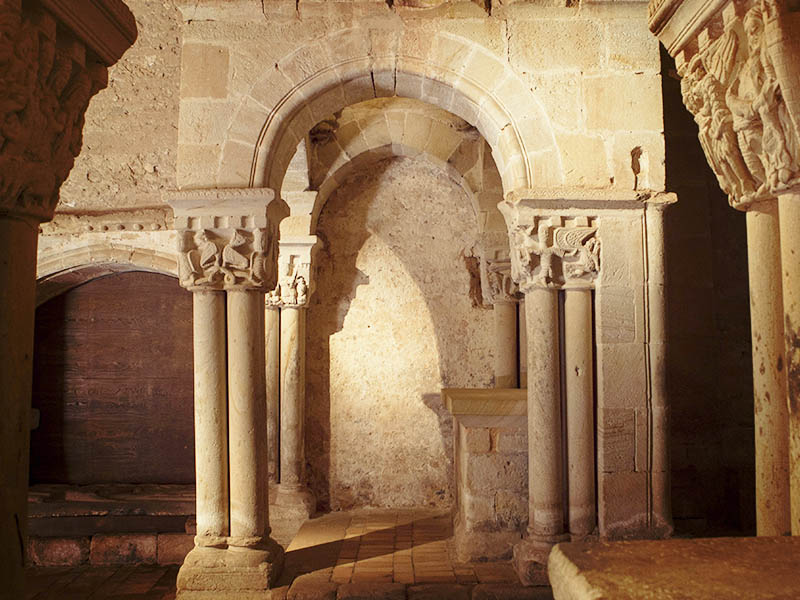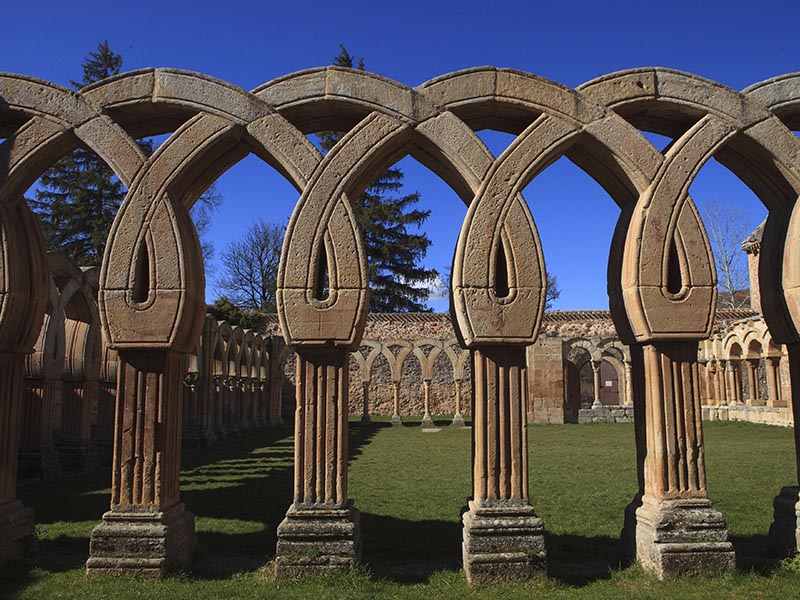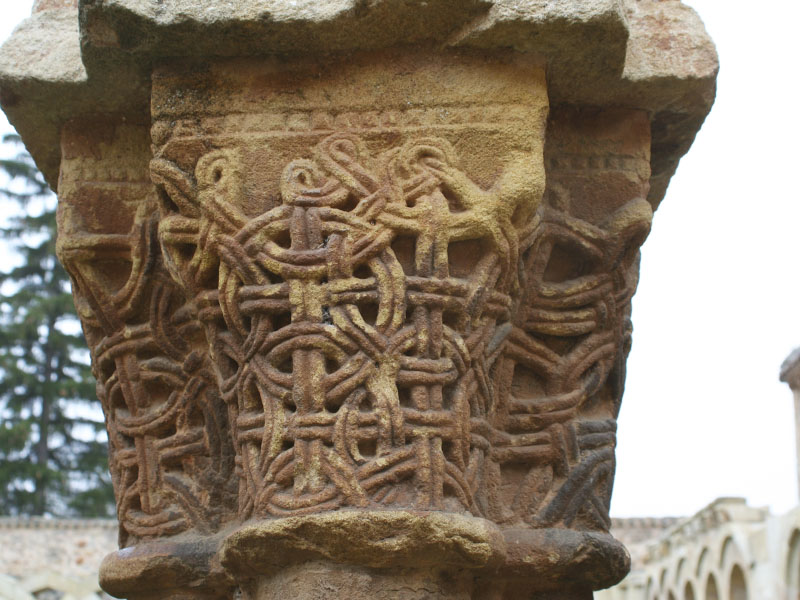CLOISTER OF SAN JUAN DE DUERO
THE SYMPHONY OF THE STONE ARCHES AND CULTURES
HISTORY
Crossing the River Douro through the Stone Bridge Medieval origin, arrived at the left margin to a special enclave where the Order of the Hospital of San Juan de Duero settled. Declared National Monument in 1882.
The hospital Order of San Juan de Duero originating from the Holy Land and enriched by the knowledge and multiculturalism of those places, built an eclectic monastery, renewing a small Romanesque church that already existed and erecting the rest of the monastery honouring their patron saint Saint John the Baptist.
After many years of abandon, in 1882 it was declared National Monument and years later became the section of the Medieval Department of the Numantine Museum.
In this scenario, at the foot of Monte de las Ánimas and on the historical base of confrontation between the neighbours of Soria and the military orders of river Duero regarding the use of wood and hunting on this spaces, Becquer creates his legend "Monte de las ánimas".
The cloister annex to the church and used as the burial area between the 13th and 15th century,communicated all the parts of the monastery. It is the only monastic dependency remaining and one of the most original ones of the Spanish Romanesque thanks to its variety and the influences of its architecture: traces of the purest Romanesque, pointed archs tending to horseshoe, not to forget the evident Byzantine and Arabic footprint. The chamfer, with a clear Arabic influence, are rounded off with Caliphal archs.
It is estimated that there were two phases during its construction which correspond to the Romanesque part and lately at the beginning of the 13th century to the rest.
On today's construction it is possible to clearly recognize four parts:
- The first part, Romanesque, is situated on an ashlar wall with semi circular archs resting on coupled columns with sculpted capitals with Biblical passages.
- On the second part there are horseshoe archs slightly pointed, of Almoravid and Nasrid style, and supported on half-columns, jointed in groups of four, with plants and fantasy creatures motifs on its capitals.
- The third part counts with large pointed horseshoe archs which play to get intertwined and are supported on grooved pillars and without capitals, giving a more traditional and harmonic essence.
- The fourth and last part, counts with shy pointed horseshoe archs also intertwined supported in a non continuous way on pairs of columns with plant decorations on its capitals.
| Tuesday to Saturday: 10.00 to 14.00 h. and 16.00 to 19.00 h.Sunday and holidays: 10.00 to 14.00 h. Monday and Sunday afternoons: Closed More info about timetables here. |
|
| Basic 1 € / Free Saturdays, Sundays and holidays. | |
| 975 230 218 | |
| “Route River Duero” | |
| "Romanesque Route" "Templaria and Knightly Route" |
|
| Video | |
| Audioguide | |
| Download info |








